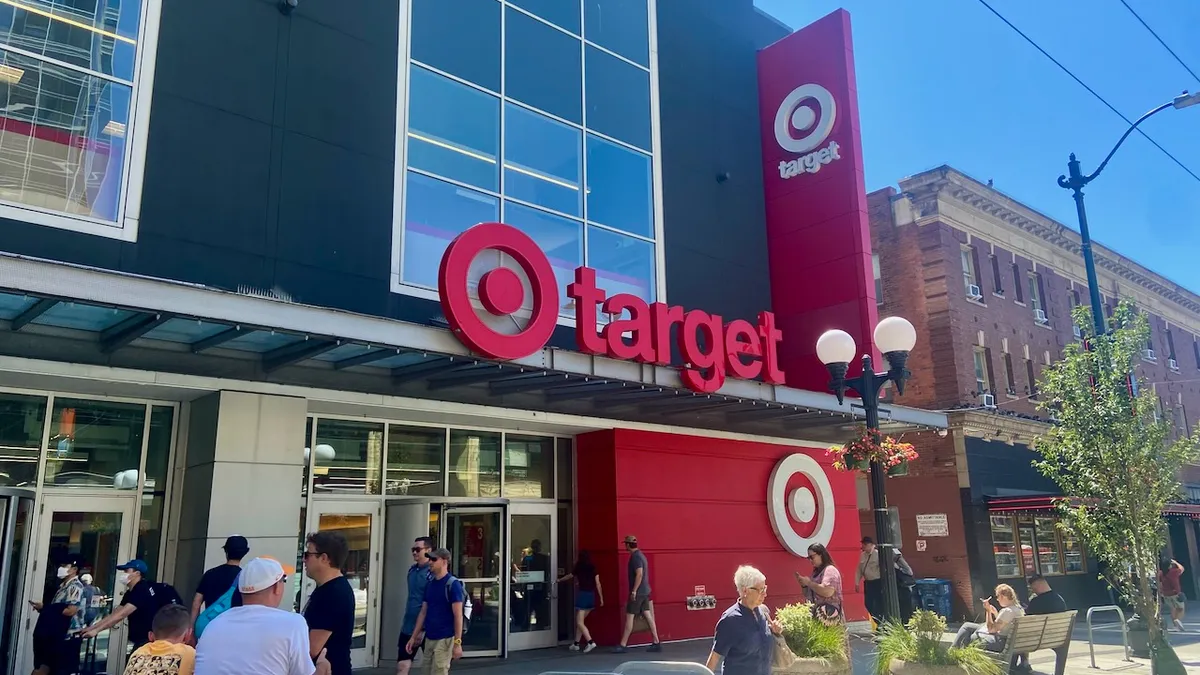In 1956, Swedish-based furniture retailer Ikea disrupted the sector when it started flat-packing its products. Gillis Lundgren, an Ikea employee at that time, was tasked with delivering a LÖVET table. In order to fit the product into a car and not damage it during transit, Lundgren took the legs off of the table. And Ikea's future in flat-pack was born.
The retailer was not the first company to use the flat-pack furniture method, but it did perfect it and popularize it with consumers.
Now, Ikea faces some 21st century flat-pack competition from emerging direct-to-consumer brands. A host of brands ranging from Burrow, Floyd and Campaign, to higher-end brands like Hem offer flat-pack shipping and the number of direct to consumer (DTC) brands integrating this method into their supply chains is growing.
Why are companies flat packing?
It can be difficult for new players to break into an industry, particularly within the furniture sector. Historically, when brands wanted to enter the market, they had to rely on regional chain stores as the main selling channel. Direct-to-consumer brands challenged this notion by cutting out that middleman and circumventing the need for retailers.
Shipping a pre-assembled piece of furniture directly to a consumer can be costly because of the large and bulky nature of the products. By shipping flat-packed goods to the customer, brands are able to fit more parcels per truck, and eliminate the need to create a separate fleet of trucks or outsource last-mile efforts.
"We realized with a modular sofa system there was a way to make the couch pieces fit into boxes that are within the FedEx and UPS dimensional weight guidelines. We can ship with UPS Ground, which takes a ton of cost out."

Stephen Kuhl
Co-founder and CEO, Burrow
"[The] means to get the goods to the consumer, as an online retailer, are through shipping," Michael Brown, a partner at A.T. Kearney, told Retail Dive in an interview. "And flat pack is by far, a much, much more cost-efficient way to get the goods to the consumer, as opposed to the white glove delivery that's required for assembled furniture."
Stephen Kuhl, co-founder and CEO of Burrow said he and his co-founder Kabeer Chopra saw how bed-in-a-box brands disrupted the mattress industry through innovative shipping methods and thought the method could be applied to other products as well.
"We realized with a modular sofa system there was a way to make the couch pieces fit into boxes that are within the FedEx and UPS dimensional weight guidelines. We can ship with UPS Ground, which takes a ton of cost out," Kuhl said in an interview with Retail Dive.
This method of packaging and shipping also allows the brand to speed up its delivery times, which in an industry continually influenced by shipping moves from giants like Amazon and Walmart, could be a key differentiator.
"We can deliver in a week," Kuhl said. "And the average cost to ship a three-seater sofa from Burrow anywhere in the country is about $100, which is just hundreds and hundreds of dollars cheaper, less environmentally impactful and faster than the traditional model."
And just as it is easy for the brand to box up the sofa and ship it to the consumer to assemble, the consumer can take it apart, box it up and reassemble it again. For a segment of Burrow's key audience — young adults, who move frequently — this can be especially useful.
However, the party that benefits the most from this ease of repacking may be the brand itself. In a space where purchasing online is still inherently difficult due to the high-touch nature of furniture and consumers' desire to try before they buy, perfecting the returns process is essential. If a consumer can pack the pieces back into the original boxes they came in and drop it off at their nearest UPS facility, it becomes much more cost-effective than the company sending out a truck to haul a large sofa out of someone's home.
Selling consumers on something that's been seen as a headache
Flat-packing goods saved Ikea costs, which it was able to turn into lower prices for the consumer, but it also created headaches associated with the assembly process. Ikea's products require a fair bit of assembly, often involving tools, which gave rise to jokes about how difficult it was to put together traditional ready-to-assembly products.
"If consumers are buying something that is flat-pack, and they have to assemble it themselves, they expect to be compensated for their labor with a lower price."

Michael Brown
Partner, A.T. Kearney
Through design innovations, brands like Burrow and Campaign have made it so consumers can quickly and easily assemble the products — no tools required. Kuhl said for Burrow specifically, the brand posts videos and gifs to help consumers with every step of the assembly process. Although Ikea has also posted assembly videos of its own on its website, those videos show there are more steps involved.
Of the new DTC brands, Hart Posen, professor at the University of Wisconsin-Madison's school of business, said, "You get the sense from looking at all of them that this is not your Ikea construction set. This is a high-quality product with a superior flat-pack to construction technology."
Instead of fumbling through the various parts, and running the risk of stripping a screw, many of these DTC flat-packers designed their products to be assembled using latches and alignment pins.
"Quality is not dependent on the assembly methodology," A.T. Kearney's Brown said. "The quality is based on the construction principles, whether it's hardwoods or pressed board or veneers versus solid."
Burrow, for instance, is a mid-market product, so it's more expensive than a standard Ikea sofa. However, it also has features that higher-priced, equivalent products have, Kuhl said. Shipping, another factor that consumers can generally expect to raise the price for furniture, is also baked into Burrow's price.
Aside from the convenience and price benefits associated with Burrow's modular design, the pieces also can adapt to customers' changing needs. So, for example, when a consumer is ready to move out of their smaller apartment and into a bigger space, they simply need to buy an additional insert to latch into their existing sofa.
"If consumers are buying something that is flat-pack, and they have to assemble it themselves, they expect to be compensated for their labor with a lower price," Brown said. However, "if the product is more desirable, more in line with consumers' taste, that could also drive a premium they might pay for the product, regardless of how it is shipped to them, or their need to assemble it."
But should Ikea fear the brands using the same shipping methods it popularized years ago? Likely not, Posen said. The new entrants' target customer may be one that's familiar with Ikea's model, but are looking to upgrade their furniture or invest in pieces.
"I just don't even think they're competing with Ikea," Posen said. "They might be looking to go after the Ikea customer, who grew up on flat-pack, bottom of the range furniture, and who feels like they've graduated to sort of higher quality, but feel very comfortable with this flat-pack notion."






















